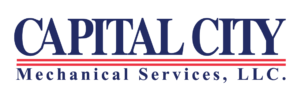State of Development: Issues Affecting Construction Today
When it comes to new development or major renovation projects, the top questions for most developers are: will the project be completed on time? And, will it deliver on-budget? The answers to these questions are obviously complicated as multiple factors influence the outcomes – material costs, availability of skilled labor and deployment of cutting-edge technology.
Harnessing first-hand knowledge of these influencing factors equips developers with more accurate, competitive intel that just might tilt the scales in favor of successful project deliveries in 2025 and beyond. So, a few key trends remain top-of-mind among most general contractors that can equip developers and investors alike.
Materials Costs Hold (For Now)
The seemingly daily vacillations of the U.S. economy make it hard to determine how inflation and tariffs will unlimitedly impact the cost of construction materials. However, as of mid-year 2025, these economic factors have yet to greatly affect materials costs. In fact, the 2024 flattening of these costs in the wake of the pandemic has continued into 2025.
But that may not necessarily mean that costs aren’t increasing. As subcontractors and manufacturers vie for fewer and fewer opportunities, many are absorbing these fractional increases instead of adjusting pricing in order to remain competitive. However, this is arguably not sustainable for the long-term.
Until the tariffs with China and India – the two largest suppliers of building materials to the United States – are finalized, their impact on the cost of construction materials is unknown. With that said, in anticipation of the tariffs, now is the time to consider how risks will be shared between the general contractor and client and identify strategies to hedge against price fluctuations. These business strategies may call for updates to contracts and other legal documents.
In anticipation of rising costs, some commercial builders are warehousing or bulk-buying standard construction materials. Others, such as Swinerton, are encouraging owners to commit to an early purchase and procurement of materials. Identifying local or regional sources that are not impacted by tariffs are also lucrative strategies to control costs.
Steel and Concrete Alternative
To mitigate the uncertainty of tariff impact, commercial developers’ foray into the mass timber space is now timelier than ever before. This sustainable material is a stronger, nationally sourced alternative to steel and concrete.
Why the attraction? Mass timber offers a host of benefits that not only works to counter the uncertainty of international tariffs but also offers economic benefits while creating an improved environment – regardless of the price of steel or concrete.
- National supply chain – this renewable resource can be sourced within the continental borders, limiting the effects of tariffs on the supply chain. As the appeal of this material grows, the supply chain will become even more robust and accessible.
- Expedient construction schedules – according to Sustainability, mass timber can expedite construction schedules by 20-30% allowing a revenue-producing asset to deliver to market in less time.
- Prefabrication perks – the fabrication of mass timber components within a controlled, offsite facility results in improved onsite project efficiency, project safety and, often, less labor.
- Live-better environment – ample research proves that exposure to natural elements, such as mass timber, supports cognitive function, blood pressure regulation, stress response, immune function, recovery and healing and psychological well-being – while improving air quality.
More and more commercial developers among various sectors including office, civic, education and healthcare, are incorporating mass timber into the built environment. A few notable mass timber projects include the City of Brookhaven, Ga. City Hall, the Live Oak Bank headquarters campus in Wilmington, NC – constructed by Swinerton in partnership with its affiliate company Timberlab, the Andy Quattlebaum Outdoor Education Center at Clemson University in South Carolina, and the 25-story Ascent MKE building in Milwaukee, Wis. – the largest mass timber building in the United States.
Labor Pool Status Quo
For years, the construction industry has been abuzz about its workforce shortfall. Today, the quality and quantity of skilled laborers throughout the construction industry remains status quo. In January 2025, Associated Builders and Contractors announced that the industry needed nearly a half-million new workers by 2026 in order to fulfill current pipeline demands. Why? More skilled workers are retiring than young professionals are choosing construction as a career.
The construction industry is in dire need of an infusion of accountable talent – both trade and craftspeople – that takes pride in their work and has a desire to build a career in construction.
Education is top priority to attract young talent, encourage current talent and engage a workforce with staying power. Many construction firms are partnering with top-ranked education and industry organizations to identify best practices and refine skills training programs.
For instance, Swinerton collaborates with Construction Ready and National Center for Construction Education and Research to recruit and train people for careers in construction. Many construction firms, including Swinerton, also team with SkillsUSA to expose students to various pathways within the industry. Developed for middle school- through college-aged students, SkillsUSA programs cultivate the workplace and technical skills needed to build the next generation of skilled workers.
Swinerton’s own laser-focus on workforce development has resulted in an investment in talent-related strategies to improve work environments and establish career development programs that foster skill development and career advancement. Peer-to-peer training also assists the younger generation in levelling up along their career pathways.
Collaboration among the construction industry is key to addressing the current labor shortage. In a nation built on innovation and a pioneering spirit, only by preserving the construction workforce will this spirit persevere.
Self-Perform Workforce
A skilled workforce not only equips construction companies to build, but it also equips those firms with the skilled workers to self-perform key functions of the construction job. In self-perform work, general contractors utilize their own skilled workforce and resources to complete specific tasks instead of outsourcing those jobs to external contractors. This allows firms to control costs, job quality and project schedule, ultimately resulting in benefits for the client right from the start.
- Greater efficiency – With craftspeople as part of the construction team, inhouse talent eliminates the need for Requests for Information (RFIs) from and scheduling coordination with outsourced firms.
- Lower costs – Without the need for subcontractors, efficient workflows, reduced delays and better coordination throughout the construction cycle, minimize costs.
- Faster delivery – Coordination of trades and tasks in-house can potentially accelerate project timelines.
Technology Streamlines
A growing number of new technologies are influencing the construction industry, ultimately improving the efficiency and precision of the construction workforce. In particular, those that automate and streamline labor-intensive, repetitive tasks to a fraction of time with minimal potential for human error are gaining traction.
Preconstruction and Estimation
- Join provides a comprehensive preconstruction and design platform that tracks changes throughout the preconstruction lifecycle, enabling seamless collaboration among owners, contractors and other key entities.
- DESTINI offers a turnkey estimation platform that improves cost certainty by calculating material quantities based on blueprints, assigned pricing and other construction documents.
Job Site Execution
- Dusty Robotics creates precise, efficient layouts in less time without human error, streamlining the traditionally labor-intensive layout process.
- Microsoft/Copilot serves as an AI-based software tool instrumental in scheduling, preparing and submitting RFIs, and troubleshooting on-site challenges.
Project Documentation and Management
- Matterport’s digital twin imaging and drone footage provides the visual documentation needed to streamline project management at every phase of the construction cycle.
These technologies collectively minimize demands on the already-limited construction workforce while improving quality and efficiency across the entire project lifecycle.
Exploration and experimentation continue to guide the adoption of new construction technologies and software platforms and will persistently shape the future of the industry.
Interested in learning about the state of play of the CRE industry? Read the full State of Play publication with this link.
Thank you to our State of Play Sponsors:






To stay up to date on news and resources such as this and other topics of importance to the real estate industry, subscribe to the free CRE Insight Journal Newsletter using this link.
Comments are closed.









